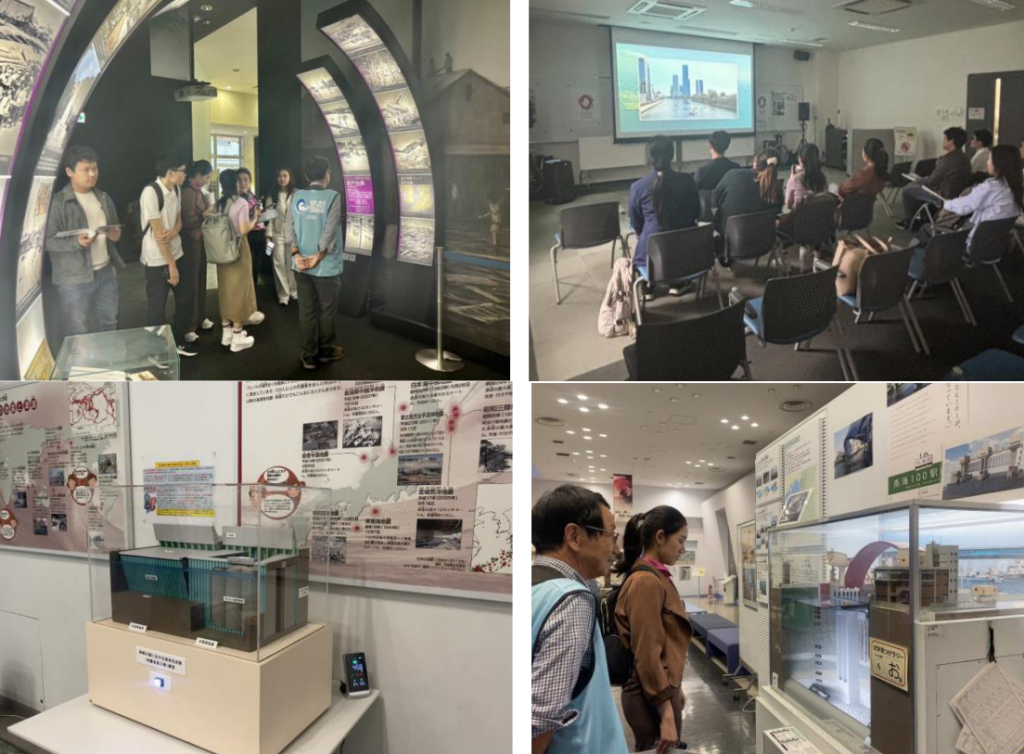Participants' Voices
ダブルディグリー
Ms. Parichat Kaeomalun

On October 24, 2024, I had the opportunity to visit the Tsunami/Storm Surge Disaster Prevention Station. The facility plays a crucial role in educating the public about disaster preparedness, focusing on tsunamis and storm surges. Comprising a Disaster Prevention Building and an Exhibition Hall, and is equipped with advanced disaster prevention technologies. This visit offered valuable insights into disaster management strategies that can be applied in various contexts, including in disaster-prone regions like Thailand.
Visiting the Station offers invaluable lessons in disaster preparedness. The facility highlights the unique geographical vulnerability of Osaka, a city located below sea level, making it prone to flooding and storm surges. The historical displays showcase major typhoons such as the devastating 1934 Muroto Typhoon and the 1950 Jane Typhoon, emphasizing the severe damage caused by these events. The Station featured several impressive exhibits that left a lasting impact on visitors.
One of the key attractions was the immersive simulation room that recreated the effects of a tsunami, allowing participants to experience the intensity and power of a large-scale wave event. Another notable exhibit was the interactive display showing real-time monitoring systems and early warning technologies used to detect and respond to tsunamis and storm surges. Detailed models of flood barriers, evacuation routes, and historical records of past disasters further illustrated the importance of comprehensive disaster preparedness. The key takeaway from the field tour was the critical need for preparedness, education, and community engagement in disaster prevention and response.
Participants learned that effective disaster risk management relies on collaboration between government authorities, local communities, and experts. It also reinforced the notion that awareness and active participation in drills and educational programs empower communities to better respond to and recover from natural hazards.

Thailand has faced its own challenges related to natural disasters, including floods and tsunamis. The lessons learned during the Osaka field tour provide valuable insights that can be applied to Thailand’s disaster prevention and recovery efforts. Conducting workshops in schools and communities on how to respond in the event of floods, earthquakes, or other natural disasters, raising awareness and educating people on safety measures.
Overall, this field trip fostered a profound appreciation for disaster management efforts and inspired a sense of responsibility toward community safety and resilience.
